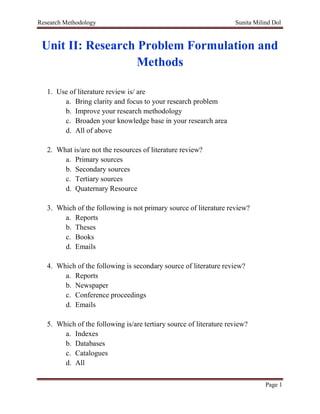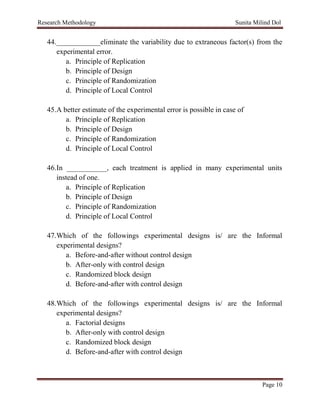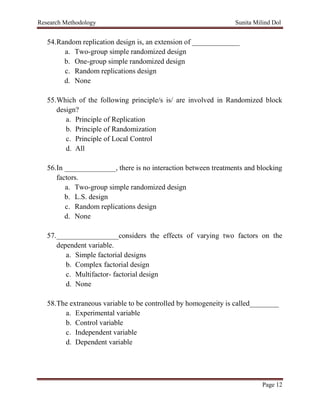The document is a comprehensive guide on research methodologies and problem formulation, covering essential topics such as literature review sources, referencing styles, study designs, and variable classifications. It includes various questions structured to assess understanding of research concepts, including sampling design, experimental design, and data analysis. The material serves as an educational resource for those looking to deepen their knowledge of research methods and frameworks.












